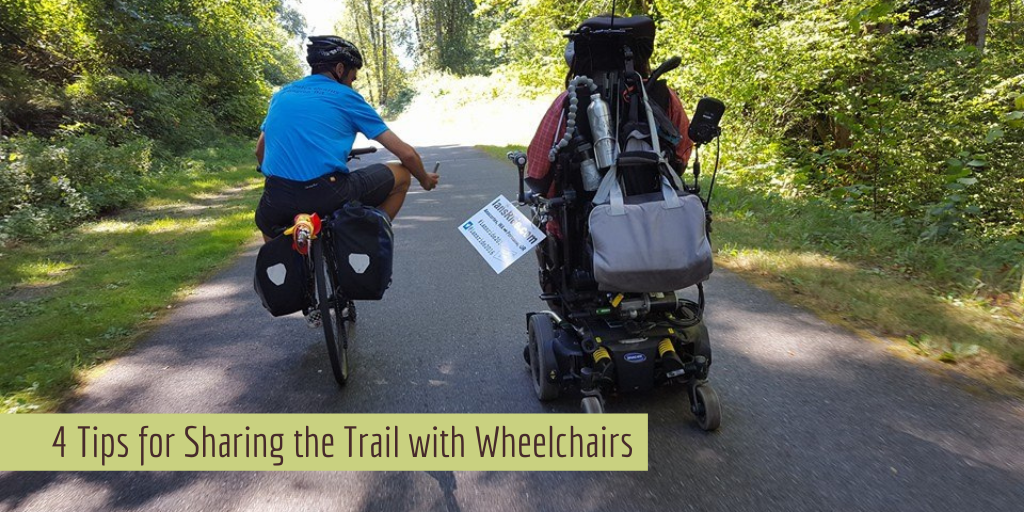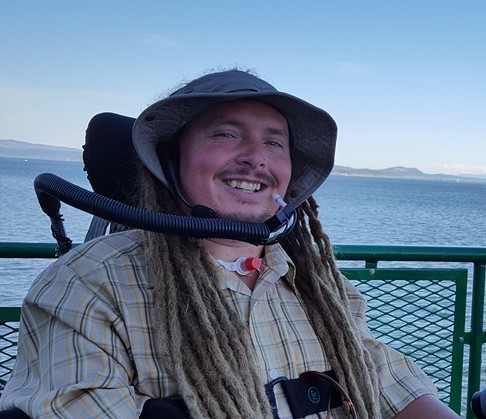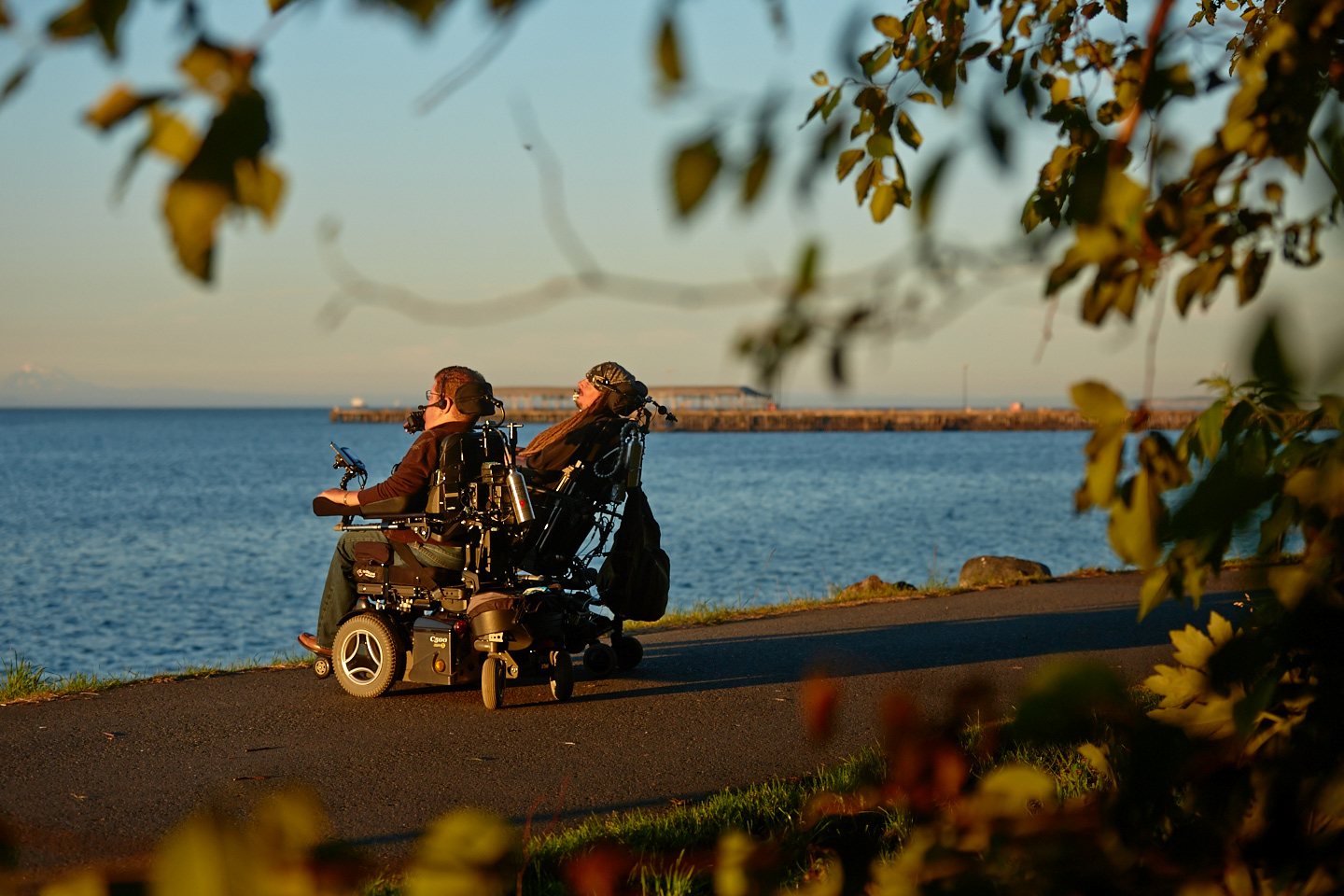
 By Guest Author, Ian Mackay
By Guest Author, Ian Mackay
 I am a power wheelchair user and an avid trail rider. I was a cyclist before my crash which left me paralyzed from the neck down. I spend as much time as possible outdoors and on my local trail. I’d like to share a few etiquette and safety tips that will help make trails and bike paths safer and more enjoyable for you as well as people in wheelchairs. I’ve enjoyed well over 400 hours last year traveling on multiuse paths in my power wheelchair. Almost everyone I encounter is delightful. That said, my time on the trails has shown me that there are a few things you can do to help ensure your safety and mine.
I am a power wheelchair user and an avid trail rider. I was a cyclist before my crash which left me paralyzed from the neck down. I spend as much time as possible outdoors and on my local trail. I’d like to share a few etiquette and safety tips that will help make trails and bike paths safer and more enjoyable for you as well as people in wheelchairs. I’ve enjoyed well over 400 hours last year traveling on multiuse paths in my power wheelchair. Almost everyone I encounter is delightful. That said, my time on the trails has shown me that there are a few things you can do to help ensure your safety and mine.
Announce Your Presence
We all have our limitations, and they aren’t always obvious to others. You might not know, for instance, that I can’t turn my head enough to see fully behind me. This means when I’m cruising along the trail, I don’t know when someone is coming up behind me to pass. That can present a hazardous situation. I tend to maneuver my chair around bumpy potential hazards like sticks, pinecones, potholes, or road debris. This means I might swerve abruptly to stay on the smoothest possible surface.
It’s important when you’re about to pass a person in a wheelchair—or any person, really—to give them a head’s up so you don’t cause a collision by catching them by surprise. A simple ring of your bike bell or a clear verbal cue like “on your left” is sufficient to make others aware that you’re about to pass.
Say Hello
I think it’s important for trail users to acknowledge each other. Sometimes it’s just a nod of the head, a smile, or a comment on the weather, but these little things really help to foster a trail community. An attentive community can instill confidence in a person who lives with a disability. Knowing that you’re not alone out there can be very reassuring. Occasionally, we may need a hand with something, and it’s easier to ask when making eye contact is standard procedure. This allows us to request help without feeling pushy. I’m not suggesting that you go around offering help to everyone you see who’s in a wheelchair—that would make me feel more disabled and less independent than I am. But by engaging, no matter how small the gesture, you create an opening for the chair user to request help if need be.
Control Your Pets and Horses
Keep in mind that animals may not be accustomed to seeing a person using a wheelchair and may act unpredictably. We don’t want to run over any paws or surprise any dogs or horses. For their safety and ours, give chair users a little wider berth when you cross paths.
Be Aware
This one’s a no-brainer. It’s good practice to be mindful when spending time on a trail no matter who’s around. If you do encounter someone in a wheelchair, know that they are likely not as maneuverable as a bicyclist or runner. I occasionally swerve or stop suddenly for various reasons—for example, I always avoid running over snakes—but I don’t want to cause an accident. Just know that a wheelchair may not move as predictably or nimbly as other trail transportation modes you see out there.


